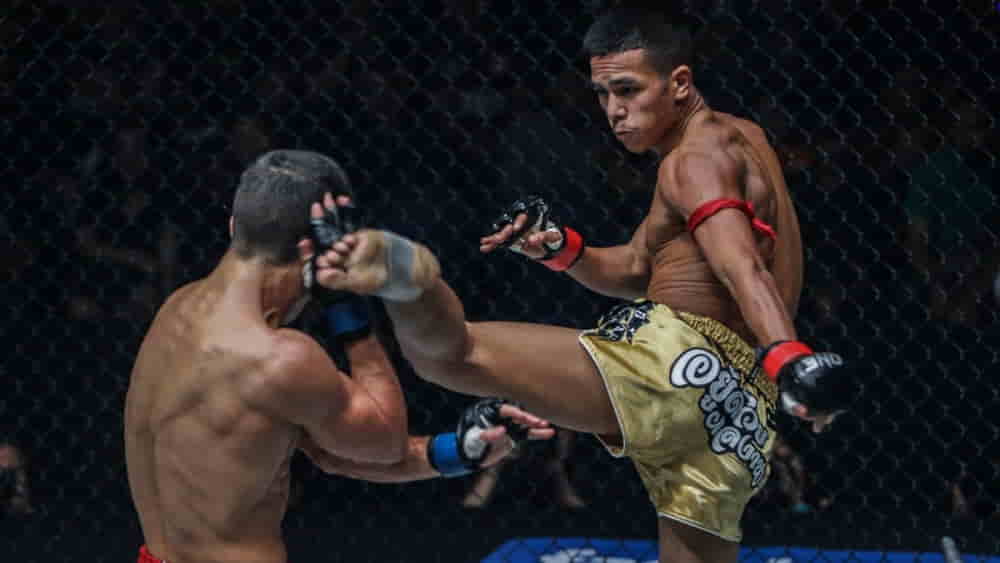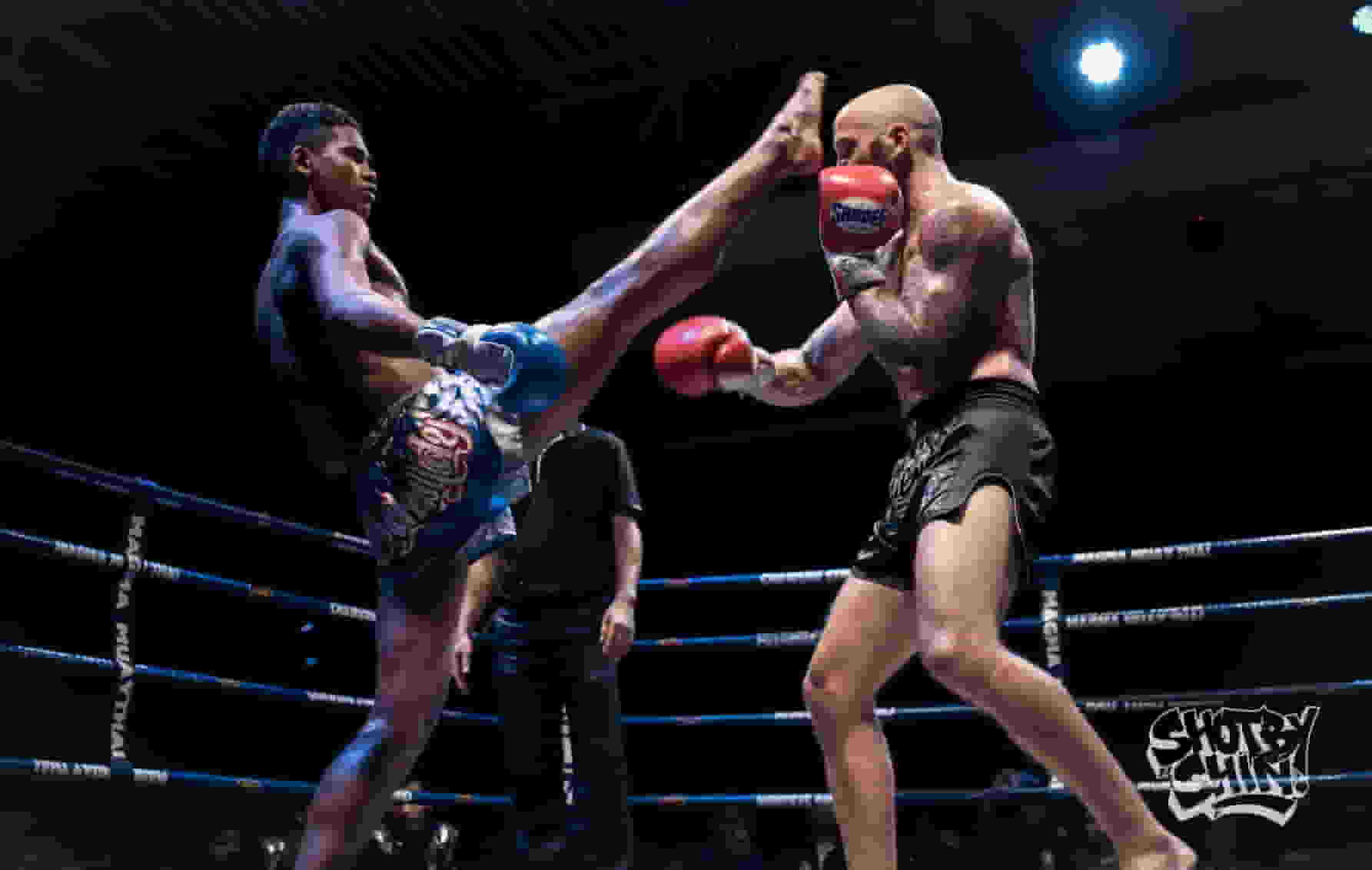In mixed martial arts (MMA), kicks can become the real crowd-pleasers in a fight, making an instant change to the battle situation. As either a method of offense or defense, the kick offers so much variation between the flashy and unpredictable strikes, as well as solid fundamental kicks. Being knowledgeable and effective at using the correct kicks in the correct moments could mean all the difference between victory and defeat in a fight.
7 most common and highly effective MMA kicks with their advantages
1. The Question Mark Kick: a deceitful attack

The Question Mark Kick is a rather deceptive technique that is used in order to confound and outsmart an opponent. It begins as a feint in the form of a low or body kick but at the very last moment, the fighter changes direction, sending the kick upward toward the opponent’s head. That sudden change of trajectory makes it hard for the opponent to read, making it a dangerous tool in a fighter’s arsenal.
Mastering the timing and technique of the Question Mark Kick can be a game-changer. A prime example of its effectiveness came from ONE Flyweight Muay Thai World Champion Rodtang, who experienced its power firsthand when #3-ranked kickboxer Walter Goncalves executed the move.
2. The Head Kick: A Fight-Ending Technique

He is a powerful, high-risk kick that can stop the fight in an instant if delivered right. A successful strike to the head area or neck will immediately knock out a person. For example, a recent vivid case of such a powerful kick was Superbon Singha Mawynn when he knocked the legendary Giorgio “The Doctor” Petrosyan out in a fight for the ONE Featherweight Kickboxing World Title.
The head kick is particularly useful when your opponent keeps his hands down low or leaves himself open to such an attack. When executed, a good head kick can end the fight; thus, it is one of the deadliest strikes a fighter can wield.
3. The Low Kick: Painful and Strategic

Low kicks, especially to the thigh, are a classic technique that can severely limit an opponent’s mobility. Known for “chopping the tree,” low kicks can wear down an opponent over time, causing excruciating pain that can lead to a TKO. Fighters who neglect to check low kicks often pay the price as the damage accumulates.
Yodkaikaew “Y2K” Fairtex showed the power of low kicks, with a third-round TKO by landing strong low kicks against Alex Schild in his second MMA fight.
4. The Push Kick (Teep): good for range and control
The push kick is a versatile tool for controlling distance and maintaining range. It targets the opponent’s midsection and pushes them backward while causing them discomfort. It is particularly effective in disrupting the rhythm of an opponent and not allowing him or her to close the distance.
British Muay Thai Jonathan “The General” Haggerty demonstrated a strong use of the push kick against Rodtang and was able to take the Thai fighter off balance on multiple occasions using perfect timing on the tips. This technique may not be new in Muay Thai but it adds it to an MMA fighter’s toolkit, taking the game into one’s hands to open up more space.
5. The Body Kick: A Painful Game-Changer
A roundhouse body kick is another technique commonly utilized across various styles of martial arts. It takes time to amass enough damage, though it can also break down a rib cage and torso to render the opponent incapable of continued combat. Strong enough, and it can be the end.
ONE Atomweight Kickboxing World Champion Janet “JT” Todd used a perfectly executed body kick to finish her bout against Anne “Ninja Line” Hogstad in the third round, showing how effective this can be in MMA.
6. The Spinning Back Kick: The Surprise Attack
The spinning backkick is a dynamic and deceptive strike that can catch an opponent off guard. Spinning and generating momentum, fighters can deliver a powerful kick that has the potential to land cleanly on the opponent’s torso or head. This kick can also create distance or set up follow-up attacks.
Another well-known spinning back kick is that of former ONE Bantamweight World Champion Kevin “The Silencer” Belingon, who rendered opponents dazed and reeling from such an action time and time again. During a memorable bout against Koetsu Okazaki, Belingon’s spinning back kick was seen sending a crashing Okazaki into the Circle Wall, proving this move holds devastating power.
7. The Side Kick: A Versatile Strike for Space and Control
Traditionally used in karate and tae kwon do, the sidekick is a valuable tool in MMA, providing both offensive and defensive benefits. The sidekick can be used to push an opponent back, creating much-needed space. It can also target the abdomen, causing discomfort and disruption to an opponent’s breathing and posture.
“MMA Sister” Lin Heqin has effectively utilized the side kick during her entire career, mainly during her kickboxing outing against Milagros Lopez, during which strike she kept the opponent under control and at the same time prepared other attacks.
MMA Strategy Including Kicks
In MMA, kicks provide much versatility in terms of controlling distance, causing damage, and setting up devastating attacks. Whether the Question Mark Kick is fake and deceptively used to create an opening for other attacks, or the Head Kick ends the fight, or the Push Kick controls the range, each kick fills a particular purpose in the contest. Mastering these kicks and learning to know exactly when to apply them gives any fighter a much larger lead in striking in the cage.
ALSO READ: 3 Reasons To Embrace Outdoor Running During The Cooler Months































